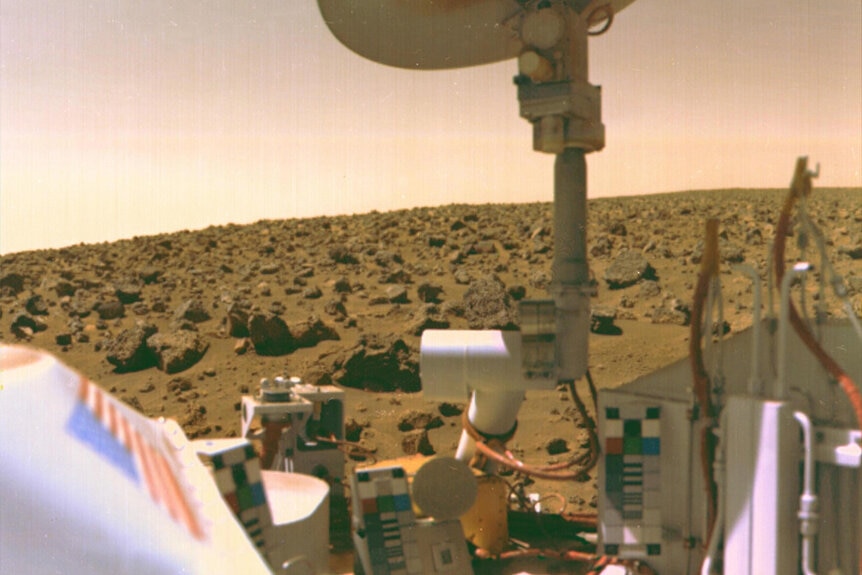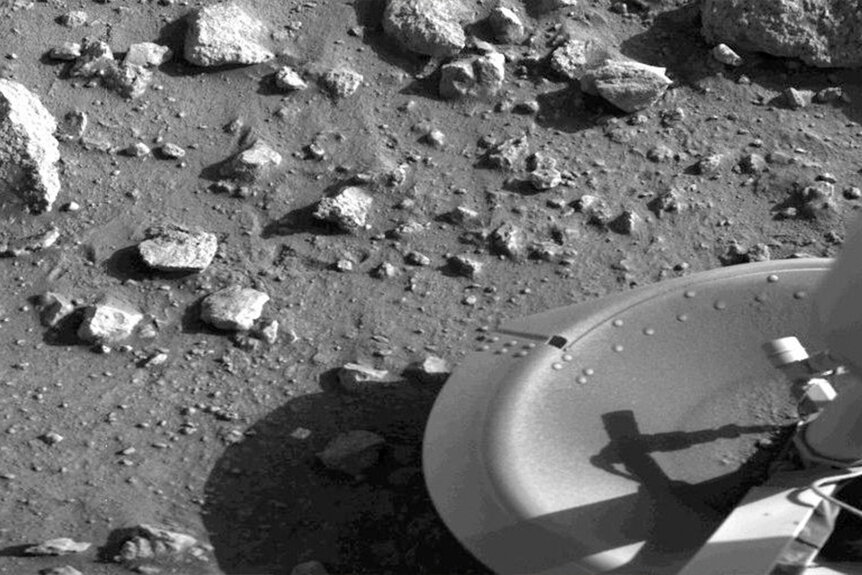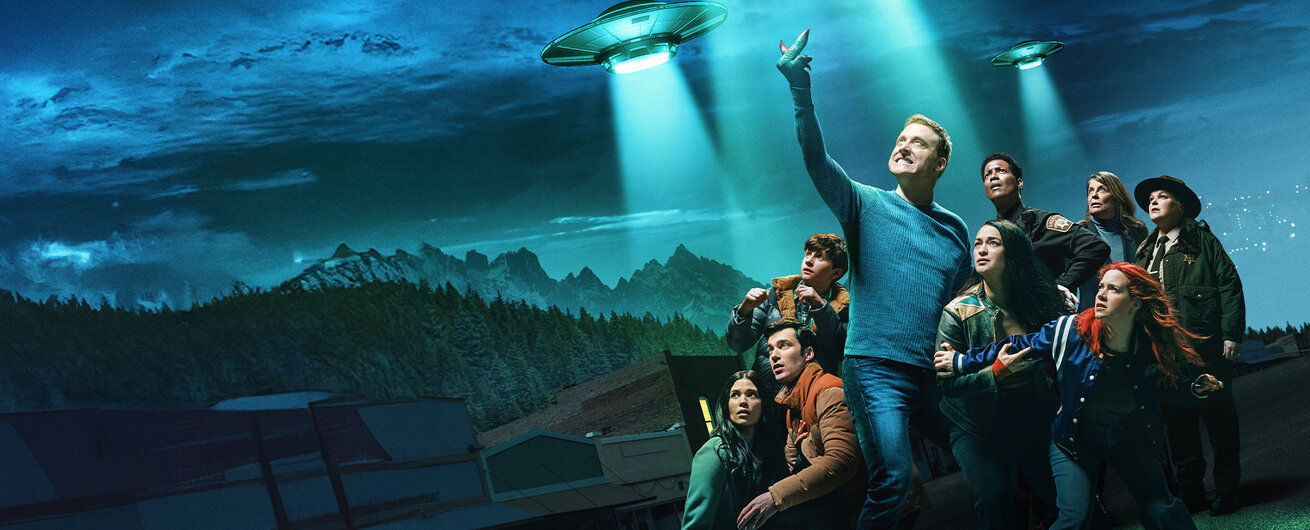Create a free profile to get unlimited access to exclusive videos, sweepstakes, and more!
Astrobiologist Suggests We May Have Found and Killed Martian Life 50 Years Ago
That would be a bummer of astronomical proportions.
Are we alone in the universe? It’s one of the biggest and most important questions in the history of our species, inspiring countless movies, books, and television shows. In the SYFY series Resident Alien (streaming now on Peacock), a select few residents of Patience, Colorado have the good fortune (and associated terror) of learning the answer for certain when a humanoid extraterrestrial crash lands in their town.
The story of Resident Alien mirrors, in some ways, the historical events of Roswell, New Mexico where an unidentified object crashed in the desert in the summer of 1947. According to authorities, it was an experimental balloon; according to conspiracy theorists it was a downed alien craft complete with recovered bodies. We may never really know what happened in the desert that day. It’s possible, however, that we did encounter alien life half a century ago, not in (fictional) Patience, Colorado or in Roswell, New Mexico, but on Mars.
RELATED: Was 1947’s UFO Incident at Roswell Simply the Result of a Secret Balloon Experiment?
In a recent article for Big Think, Dr. Dirk Schulze-Makuch, author and astrobiologist at Technical University Berlin, suggests NASA’s Viking landers may have successfully detected life on Mars, but killed it in the process.
Humans May Have Already Murdered Their First Aliens
In the 1970s, NASA sent two twin missions, Viking I and Viking II, to the Red Planet. Each mission consisted of an orbiter and a lander, allowing astronomers to observe Mars from two vantage points. Viking I touched down on the western slope of Mars’ Chryse Planitia on July 20, 1976. Viking II landed at Utopia Planitia a couple of months later, on September 3, 1976.
They were the United States’ first successful landing missions to Mars and set the stage for decades of successful Martian surface exploration. Importantly, the Soviet Mars 3 lander beat the U.S. to the surface of Mars, but failed shortly after landing, having returned only a single unintelligible image. The primary mission for Viking was to gather high-resolution photos from the surface of Mars. The Viking landers achieved that mission in spades, sending back the first clear photos from another world.
They weren’t sent to Mars just to be tourists, though. Each lander was also equipped with a set of experimental instruments intended to search for signs of Martian life. Three separate experiments were carried out, two of which showed initial signs consistent with the presence of life. Later experiments showed inconsistent results, leading scientists to conclude that Viking did not detect life.
Dr. Schulze-Makuch has an alternative explanation, suggesting that Viking may have indeed detected microbial life, but the experimental setup killed it in the process.
Revisiting the Viking Data With Fresh Eyes
Over the intervening decades, we’ve learned a lot about how life works on Earth and how it might work elsewhere. We’ve also sent another eight landers to Mars, including NASA’s Curiosity and Perseverance rovers, both of which are currently searching for life in their respective corners of the planet. Notably, we have encountered evidence of organic compounds, something Viking initially detected as well.
Schulze-Makuch suggests the lack of conclusive evidence for life on Mars may have less to do with the planet and any life it’s harboring, and more to do with our own assumptions. Because Earth has so much water, and because it is so crucial for life here, we assume that must be the case elsewhere.
With that in mind, the Viking experiments hydrated Martian regolith (Mars dirt) while checking for life. The idea was that if there was any life there, perhaps in a suspended state, adding water might make it more apparent. It’s a reasonable strategy and one that is effective on Earth for a number of small organisms that haunt extreme, dry environments.
RELATED: Where did the waters of Mars go? Underground. Maybe Martian life did, too.
By contrast, there are organisms on Earth who live in water-poor environments and have adapted to thrive there. They’ve cooked up a number of chemical solutions for pulling all the moisture they need out of the air around them, without ever needing direct access to water. Submerging them in water wouldn’t make them more apparent, it would kill them.
Schulze-Makuch likens it to finding an intelligent alien finding a human stranded in the desert, realizing that we need water, and dumping us in the middle of the ocean. The underlying principle is correct, but it’s too much of a good thing. While Mars very likely used to look a lot like Earth, it hasn’t in quite some time. It’s possible, Schulze-Makuch suggests, that any extant Martian life would have adapted over hundreds of millions of years to tolerate the environment of Mars as it is. Drowning them in water could explain the contradictory results from Viking.
We’ll probably never know if Viking really did detect life. It would be unusual for us to have found it on our first Martian outing, and not in any of our subsequent trips, so it seems unlikely that Viking did find (and kill) miniature Martians. However, it does highlight an important consideration in our search for life in the cosmos: If we enter into the cosmos carrying Earth-centric biases, we really might trip right over life, and maybe even harm it, without even realizing as much. And despite what the aliens might think about us, that’s the last thing we want.
Catch the complete first and second seasons of Resident Alien, streaming now on Peacock!




































